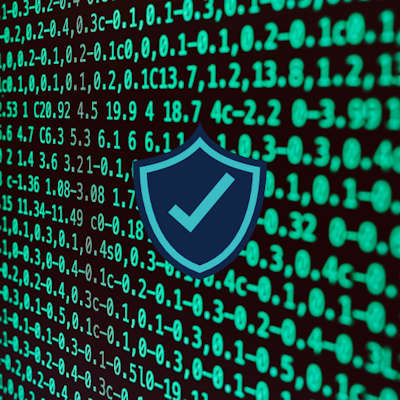
In an era where digital threats are continuously evolving, safeguarding sensitive information has become paramount for both individuals and organizations. Protecting digital assets goes beyond simple password security; it requires a sophisticated array of defenses to shield against a wide range of cyber threats. This guide outlines the top 20 security measures that are crucial for maintaining the integrity and confidentiality of your digital information. By implementing these strategies, you can create a robust security framework that minimizes vulnerabilities and ensures the safety of your data.
- Use Multi-Factor Authentication (MFA): Enhance the security of your online accounts by enabling multi-factor authentication. This requires users to provide two or more verification factors to gain access to an online account, significantly reducing the risk of unauthorized access.
- Employ End-to-End Encryption (E2EE): Use end-to-end encryption for all digital communications to ensure that only the communicating users can read the messages. This is crucial for protecting the confidentiality of your personal and business conversations, especially when sending sensitive information over the internet.
- Regular Software Updates and Patch Management: Keep all software up-to-date, including operating systems and applications. Regular updates often include patches for security vulnerabilities that could be exploited by hackers.
- Advanced Firewall and Intrusion Detection Systems: Install and maintain a robust firewall and intrusion detection system to monitor and control incoming and outgoing network traffic based on predetermined security rules. This helps to prevent unauthorized access to your networks and devices.
- Secure Wi-Fi Networks: Ensure that your Wi-Fi network is secure by using strong, complex passwords and the latest encryption standards (such as WPA3). Also, consider setting up a separate network for guests to protect access to main business or personal networks.
- Regular Data Backups: Maintain regular backups of all critical data to an external drive or cloud-based service. Ensure these backups are encrypted and stored in a secure location. This protects against data loss due to hardware failure, cyberattacks, or natural disasters.
- Use of Virtual Private Networks (VPN): Utilize a VPN when accessing the internet, especially on public or unsecured Wi-Fi networks. A VPN encrypts your internet traffic and masks your online identity, making it more difficult for third parties to track your activities or steal data.
- Secure File Sharing Practices: Avoid using unsecured file-sharing services. Opt for secure file-sharing options that offer end-to-end encryption to ensure that only the intended recipients can access and decrypt the files.
- Implement Strict Access Controls: Apply the principle of least privilege by ensuring that individuals have access only to the resources that are necessary for their specific roles. Use robust authentication methods to control access to sensitive information, and review access permissions regularly.
- Employee Cybersecurity Training: Conduct regular training sessions for employees on cybersecurity best practices and phishing attack prevention. Educating your workforce about the importance of security and how to recognize security threats is crucial for safeguarding your organization’s digital assets.
- Anti-Malware Software: Install comprehensive anti-malware software on all devices that connect to your network, including mobile devices and workstations. Ensure that the software is always up-to-date and set it to perform regular scans to detect and eliminate threats.
- Data Encryption: Encrypt all sensitive data at rest and in transit. This makes it unreadable to unauthorized individuals, even if they manage to gain access to your network or intercept data being transferred over the internet.
- Biometric Authentication: Implement biometric authentication methods, such as fingerprint scanners, facial recognition, or iris scanning, to provide an additional layer of security. These methods can be used to secure devices, data access points, and sensitive areas within an organization.
- Secure Configuration of IoT Devices: Many Internet of Things (IoT) devices come with default settings that may not prioritize security. Change default passwords, disable unnecessary features, and regularly update the firmware to secure these devices from potential vulnerabilities.
- Disaster Recovery Planning: Develop a comprehensive disaster recovery plan that includes detailed procedures for restoring data and resuming operations after a security breach or other disaster. Regularly test and update the plan to ensure its effectiveness in a variety of emergency scenarios.
- Segmentation of Networks: Divide your network into segments to limit an attacker’s ability to move laterally within the network if they gain access. This helps to contain potential breaches and reduces the risk to critical data and systems.
- Security Information and Event Management (SIEM): Implement a SIEM system to provide real-time analysis of security alerts generated by applications and network hardware. This helps in detecting, analyzing, and responding to potential security threats swiftly.
- Zero Trust Security Model: Adopt a zero trust security model which assumes that threats could be internal or external and verifies each request as though it originates from an open network. This involves strict identity verification, device security checks, and least privilege access principles.
- Email Security Protocols: Enhance email security by implementing protocols like DMARC, DKIM, and SPF to help protect against phishing, spoofing, and other email-based threats. These protocols ensure that only authorized senders can send emails on behalf of your domain.
- Regular Security Audits and Penetration Testing: Conduct regular security audits and penetration testing to identify and address vulnerabilities. Hiring external experts to simulate cyber attacks can provide insight into the effectiveness of your existing security measures and highlight areas for improvement.
Implementing these top 20 security measures is essential for any robust cybersecurity strategy. While no system can be completely invulnerable, employing a comprehensive approach that includes everything from basic data encryption to advanced network segmentation and regular penetration testing can significantly reduce the risk of cyber attacks. Continual assessment and adaptation of these strategies are vital as new threats emerge. Remember, the goal is to stay one step ahead of potential attackers and ensure that your digital information remains secure in a constantly changing digital landscape.
